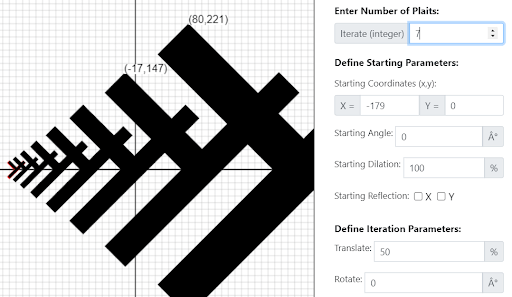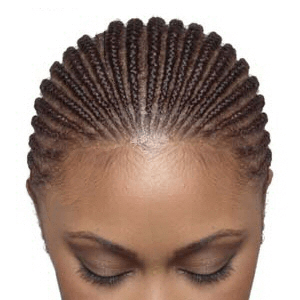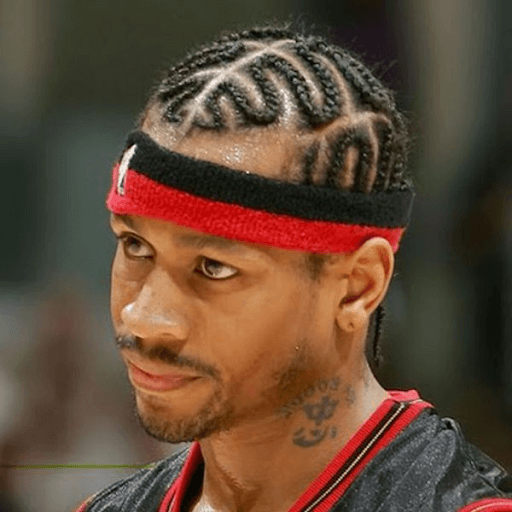Math Challenges
Test your knowledge with these word problems
Geometric Transforms
Need a little help? Try out the Simulation Tutorials
Problem 1:
You have been hired to create a crash-proof race car suit by braiding kevlar. If the braids are too close together it will be too stiff. If they are too far apart, it will allow injury. Create a design where each new braid overlaps half the braid before it. By what percentage do they translate? Check your answer in the simulation.

Problem 2:
Marvel studios just paid you $50,000 for your designs for the next generation of Black Panther costumes. They especially liked this pattern. You did not record the dilation factor, but fortunately the X,Y coordinates were labeled.
- What was the dilation, based on the fact that the highest Y value was 221, and the second highest was 147? [hint: try working backwards. take a guess, multiply the small Y by that dilation, and see if it overshoots or undershoots the big Y value.]
- Check your answer in the simulation. The starting dilation is 100%, and there are 7 iterations.

Problem 3:
Allen Iverson tells his stylist that in order to have braids that look like he is “totally in control” he wants them to start at zero degrees (perfectly horizontal) and end at -90 degrees (perfectly vertical). There are going to be 24 plaits in the braid. How much should they rotate by in each iteration? [hint: take a guess, multiply that rotation by 24 and see if it overshoots or undershoots the span of -90 degrees.] Check your answer in the simulation.

Algebra
Need a little help? Try out the Simulation Tutorials
Problem 4

Each plait (y shape) in the braid is scaled down by 90% of the previous plait.
- If the first is 1 inch wide, how wide is the second?
- How wide is the third?
- How wide is the nth plait? Create an algebra equation to predict the value. Check your answer in the simulation.
Problem 5
- There are 360 degrees in a circle. Use the simulation to create a circular braid with no dilation and a rotation of 1 degree. What is the smallest number of plaits that closes the circle? Why?
- Same questions using a rotation of 10 degrees and 36 degrees. What is the smallest number of plaits that closes the circle? Why?
- Create an equation that tells you the smallest number of plaits needed to close the circle for any given rotation.

Problem 6
- There are 12 braids from zero to 90 degrees in the image below. How do you calculate the starting angle for each? Hint: use the simulation to do the first one by eyeball. If you repeated that angle 12 times, would you end up at 90 degrees?
- Write a general equation for any number of braids fitting into one side of the head.


Trigonometry
Need a little help? Try out the Simulation Tutorials
Problem 7
Use the simulation here to demonstrate the following:
- Change the phase by switching to a cosine.
- Change the amplitude.
- Turn this into a damped wave to match Allen Iverson’s style.
